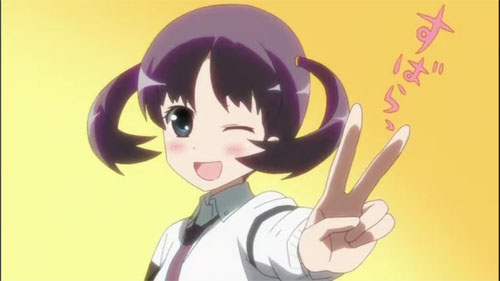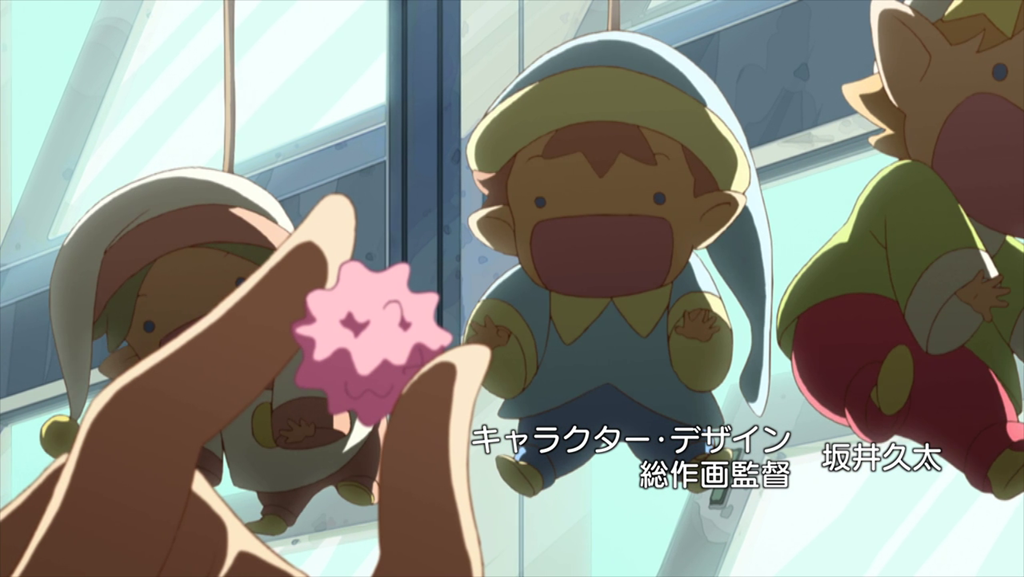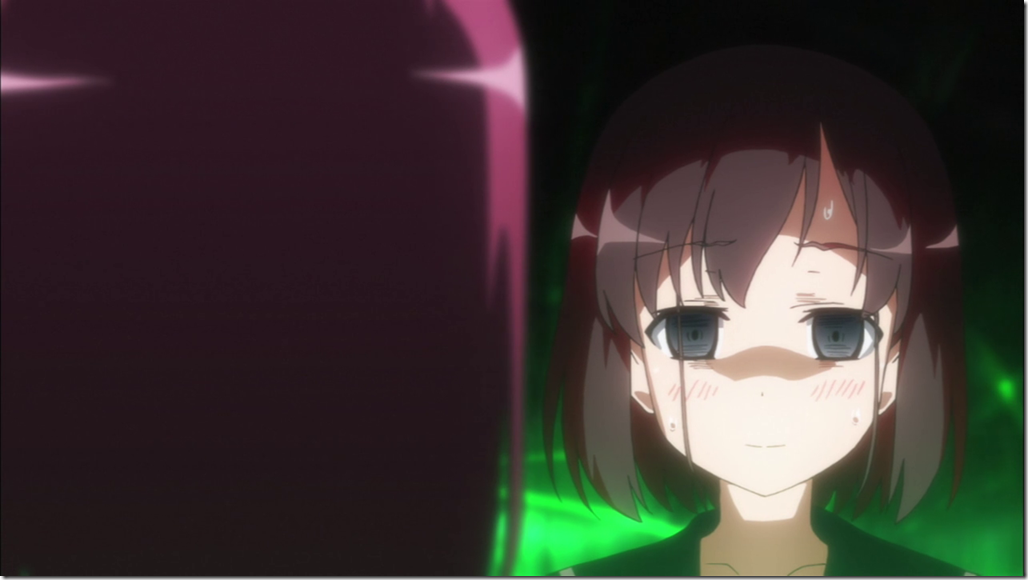
Subara (a.k.a Hanada Kirame)
Exam time over, back to mahjong girls.
Saki 11 had more of Teru going wild, Subara’s ‘sacrificial pawn’ one-liner that had many Japanese fans swoon and Toki realizing that yes, the nationals make you do crazy things.
It also had Toki and Subara stopping Teru’s East 4 dealer turn.
How the two team up and give it their all for a common goal is nothing short of beautiful. First of all, Subara proves herself the best prepared for her match against Teru. Sitting as the next player after the champion, Subara decides to pon her way to victory. Of course, it’s not like she just got a hand full of pairs to begin with and went with the flow – she had to aim for pairs and triplets to begin with, throwing away her sequences. Why pons? Calling a lot makes both her hand and the general flow of the game easier to read for both Toki and Kuro, which is not without meaning. But more importantly, each time Subara calls pon, Miyanaga Teru loses an opportunity to draw a tile. If Subara pons on Toki’s discard, the order ‘resets’ back to Subara’s turn and Toki gets an extra draw. If Subara pons on Kuro’s discard, both Toki and Kuro get an extra draw. If you count in the discards Subara salvaged for her own hand, she gave team Teru Busters ten tiles of advantage while the champion was just sitting there, unable to do a thing. With four more draws to her hand, Toki is finally able to outrun Teru to a tsumo – this is what Toki refers to when saying that Subara ‘allowed her to win.’ And Subara knew this is what she has to do from the very beginning – as she says, she has no choice now that she’s South to Teru’s East. It’s not something you can do with every hand, not even something guaranteed to prove effective every time, but it was a tactic that a powerless human came up with against one of the most powerful probability manipulators of the Saki universe, and it worked. My respect, Subara sempai.

Of course, the reason the tactic worked so beautifully this time around was because Toki was out there being awesome, too. Playing into Subara’s pons while advancing her own hand could be compared to tightrope walking while juggling burning sticks, a feat so fiendishly difficult it seems simply impossible for an ordinary person to accomplish. Then again, Toki is not even close to being ‘ordinary’. Two turns ahead – the power that brought the Senriyama Ace to the brink of exhaustion ideally giver her pon / not pon information on eight different tiles ahead of time – that’s almost a fourth of the entire tile set! And all the while, Toki gets exclusive info about the tiles that will and won’t come on her draws, further accelerating her own hand. With the double boost provided by Subara’s tactics and her own ability, it is no wonder Toki was able to break through the stream of Teru’s endless strikes.
And yet, this victory was not what Toki really wanted. Sorry Shindouji, I couldn’t see your last tile. And what does Subara do in response? She flips her last remaining tile face down. It doesn’t matter. That was marvelous.
Now, hiding a losing hand before shuffling for the next hand is nothing uncommon. It’s often considered bad manners to brag about your would-be winning hands, and there’s usually little reason to give your opponent more info about your playing style than necessary. But just as discard do, this simple action can have deeper significance in Saki. Kajiki Yumi wordlessly hides her one-away from tempai kokushi musou hand that could have been the key to her victory over Saki and Koromo. Nearly winning doesn’t count. Hisa flips her tiles face down before Saki can draw her winning tile in their Individuals match, already knowing what’s to come and admitting defeat. That’s as far as I go.

Subara doesn’t know exactly how Toki’s ability works, but she understands enough – ‘Sorry, I couldn’t see your last tile.’ Onjouji Toki wanted to play into Subara’s hand, but couldn’t. Was one of the tiles in my winning hand the one Shindouji needed to go out? That’s the question lurking in Toki’s mind as she claims victory. Not her victory, their victory, even if the heartless point totals say something else. But Hanada Kirame understands. She flips her last tile down and buries the answer to the question in darkness until the match is all over and they go their separate ways. It doesn’t matter. That was marvelous.
Read Full Post »















